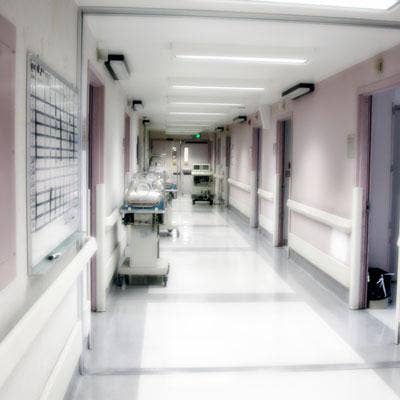Pain Management: 8 Ways Hospitals Are Bungling EHR Adoption

Hard For Hospitals To Keep Up
Just because more hospitals are implementing electronic health record systems, it doesn't mean they are doing it right. With changes in technology and in the medical industry itself, it is getting even harder for hospitals to keep pace with regulations that require EHR adoption, said Ed Simcox, U.S. health-care practice leader at Logicalis, No. 26 on CRN's Solution Provider 500. Take a look at the most common errors hospitals make and how a solution provider can help.

Lacking Complete Records
Doctors often don't have access to complete patient records even if the hospital invests in an EHR megasuite, where hospitals have centralized all data for each patient, according to Logicalis' Simcox. The problem is that hospitals are undergoing a lot of consolidation, he said, which means individual systems have to be integrated. However, most hospitals, by nature of the business, can't put everything on hold to correctly integrate the systems. The solution for this problem is to either integrate or leave data in its native system and use an interface engine to cross data over when necessary, he said. While hospitals are taking steps such as this, Simcox said the acceleration of mergers means that it is difficult for hospitals to keep up with integration demands.

Missing Patient Images
Hospitals also are struggling with having access to full imaging records. That is because a lot of imaging is done at independent imaging centers, Simcox said. For example, a cancer patient who has to undergo chemotherapy, radiation, surgery and more could have multiple records in different systems or on DVDs. That means, if the patient went to the emergency room for urgent care, past records might not be in the system to help the doctors solve the problem. This is very common problem, Simcox said. The good news is that systems are slowly changing, he said, with vendor-neutral archives now available to gather all information into a single dashboard.

Not Following Best Practices
One of the most common mistakes is that when hospitals implement an EHR megasuite, they don't follow the vendor's best practices. By changing the default screens and building a custom version, there is a "domino effect" of changes and problems created, Simcox said. In addition to problems in the system itself, customizing the system often lets the vendor off the hook if something goes wrong down the road, he said. Instead of changing the EHR system to match how things have always been done, Simcox said that all hospital employees, from administrators to nurses, should be trained to follow the best practices of the EHR system.

Failing To Consider Disaster Recovery
While hospitals often budget for disaster recovery, they're not keeping up with it, Simcox said. By thinking of disaster recovery as a destination instead of a journey, a lot of hospitals fail to update their disaster recovery plans as they use more storage or add new systems, he said. For example, one Logicalis customer had spent a lot of money on disaster recovery but had never fully tested it. The hospital had an outage last week, Simcox said, and was not able to bring up the disaster recovery site due to a hardware vendor issue.
"That's an example of well-meaning individuals saying we're going to invest in DR, but not really taking a best practices approach to it and testing it," Simcox said.

Missing Out On Meaningful Use 2
Under the Meaningful Use Stage 2, hospitals are eligible for incentives for having a patient portal and engaging patients in the portal. However, many of them aren't taking advantage of these incentives in advance of the Oct. 1, 2015, working deadline, Simcox said.
"There are organizations that are leaving money on the table by not doing this," Simcox said. "Pretty soon, not only are they going to miss out on incentive payments, they're going to get penalized. It turns from a carrot into a stick."

Missing Out On Mobility
As recent graduates enter the workforce, hospitals are having to loosen their tight grip on mobile technologies to attract top talent, Simcox said. While this is happening across all industries, Simcox said the shift to mobile was particularly dramatic in hospitals because doctors are information-driven and make decisions with data. However, hospitals didn't always have the right networks, security, devices and staff to make the shift. Adding to the problem, Simcox said, is that a lot of EHR vendors didn't have mobile views on their systems.
"It's upheaval right now," Simcox said, as EHR vendors and hospitals haven't caught up to mobile technologies but doctors are already using it. "Necessity is the mother of invention."

Missing Out On ICD-10 Readiness
The latest revision of the International Statistical Classification of Diseases and Related Health Problems, or ICD-10, significantly increases the number of diagnostic codes for doctors. Its adoption is important if hospitals want to get paid by the federal government, Simcox said. ICD-10 has a lot of benefits, including more specific diagnostic medical history. However, many doctors and hospitals are hesitant to adopt it as it greatly increases the number of codes they have to memorize. Simcox said solution providers can assist hospitals in getting past this hurdle if they help doctors build subsets of common codes that they will have to know, instead of having to memorize them all.

Lacking Analytics
Hospitals usually lack analytics when they don't have a single system for data, Simcox said. A possible solution is a data warehouse to hold copies of data, but this can be costly as it doubles the amount of storage needed and may require extra staff to build data governance, curation and warehousing. The advantage of having better analytics, Simcox said, is that doctors can practice better medicine and see larger trends. For example, Simcox said that a client hospital recently lowered re-admissions after discovering through analytics that patients with similar respiratory symptoms all lived in the same building. On further investigation, a mold problem was discovered in the building, which had been causing the breathing issues.